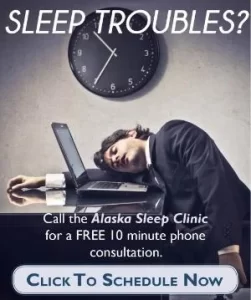Now that almost 40% of Americans are working from home, setting boundaries between work, play and rest can be difficult. As bedrooms transform into workspaces many are noticing physical and psychological clutter pile up. This disorganized environment is registered by our brain as a job to be completed and the longer we avoid tackling that job, the more clutter and guilt accumulates.
This guilt can translate into anxiety and impact our quality of sleep. Researchers have even found a direct correlation between sleep deprivation and high levels of clutter in one’s sleeping environment.
Decluttering your home for better sleep can be emotional, but once you’ve finished, you’ll feel a wave of relief and lift of anxiety. Get started with these 5 steps to decluttering your home from Zolo.

Create a checklist of all the rooms you want to approach and a timeline for when you’ll clear the clutter. Having a map to refer back to is beneficial to help keep you on track and begin to lower guilt and anxiety.
Let Go of Items You Have No Use For
Getting rid of items that you haven’t touched in months is one of the most important steps to decluttering your home. Think minimal in terms of deciding on what stays and what goes. For example, if you only use two pillows but have five extra in storage, consider donating them.
Implement an Organizing Method
The best way to organize your clutter is by utilizing a decluttering method.
Check out our five favorite methods below:
The minimalist game: On the first day of the month, you get rid of one item. On the second day of the month, get rid of two items. At the end of a 31-day month, you’ll have gotten rid of a total of 496 items.
The one-a-day method: It’s as easy as it sounds. Get rid of one belonging a day!
The four-box method: Distribute your clutter into four boxes labeled keep, throw away, donate, and storage. Strive to put as many belongings as possible into the donate box.
The closet hanger method: Turn all the hangers in your closet so that the hooks are pointing towards you. Whenever you wear something, put it back onto the hanger and face the hook away. After three months, get rid of anything on hooks that are still facing you.
The KonMarie Method: Start with your clothes, books, papers, and miscellaneous items, saving sentimental items for last. If an item no longer sparks joy, thank it for its service and get rid of it.
Donate, Throw Away, or Gift Your Clutter!
After using one of the methods above you will probably have boxes full of items that need to be disposed of, moved to storage, or donated. Rather than letting those boxes sit in your home or car, mark a day on your calendar dedicated to officially getting rid of the clutter. You can’t truly say you’re done until the clutter is out of your life for good.
Make a Sleep Schedule
Once you are ready to enjoy your clutter-free home, make a sleep schedule to ensure you are creating good sleeping habits. Refrain from using electronic devices like phones, tablets, computers, and TVs at least 30 minutes before going to bed. Their blue light activates our brain in a way that can make it harder to sleep. Also, make sure you are striving for at least 7-8 hours of sleep every night.
For more inspiration, explore their infographic on how to declutter your home!
People at risk of hoarding disorder may have serious complaints about sleep. A new study suggests that those at risk of hoarding disorder may have serious complaints about sleep.
Results show that participants at risk of hoarding disorder scored significantly higher on the Sleep Habits Survey (SH) and on three sub-scales of the Pittsburgh Sleep Quality Index (PSQI), including sleep latency; sleep disturbances and daytime disturbances.
Although decluttering may not be the immediate answer to your sleeping woes, the Alaska Sleep Clinic can be a next













